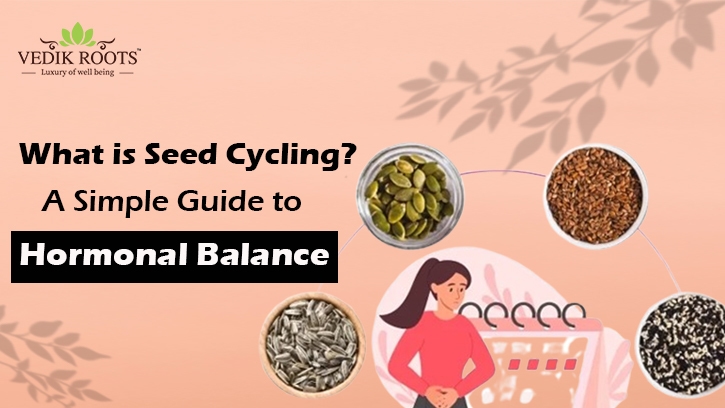
Seed cycling is a natural way to support hormonal balance by eating specific seeds during different phases of your menstrual cycle. Many believe this method can help regulate periods, boost fertility, and ease symptoms of PMS, PCOS, and menopause.
How Seed Cycling Works
Seed cycling provides important nutrients and plant compounds that help balance hormones. The process follows the two main phases of the menstrual cycle:
Follicular Phase (Days 1-14): Supports Estrogen
Flax seeds – Contain phytoestrogens that help regulate estrogen levels.
Pumpkin seeds – Rich in zinc, which helps with progesterone production in the next phase.
Luteal Phase (Days 15-28): Supports Progesterone
Sesame seeds – Provide healthy fats and lignans to balance estrogen.
Sunflower seeds – Contain vitamin E and selenium, which support progesterone levels.
Benefits of Seed Cycling
Here’s how seed cycling may help:
Regulates the menstrual cycle
Eases PMS symptoms like bloating, mood swings, and cramps
Supports hormone balance for PCOS and menopause
Improves fertility and reproductive health
Reduces inflammation and promotes clear skin
How Seed Cycling Helps with Periods
Many women use seed cycling for periods to promote a regular cycle and reduce discomfort. The mix of flax, pumpkin, sesame, and sunflower seeds provides key nutrients that may help with irregular cycles, heavy bleeding, or hormone imbalances.
How to Start Seed Cycling
Follow this simple plan:
Days 1-14 (Follicular Phase): Eat 1 tablespoon each of flax and pumpkin seeds daily.
Days 15-28 (Luteal Phase): Eat 1 tablespoon each of sesame and sunflower seeds daily.
Add seeds to smoothies, salads, yogurt, or eat them on their own.
Possible Side Effects of Seed Cycling
While safe for most, some people may experience:
Mild digestive issues if eating too many seeds
Allergic reactions to specific seeds
Interactions with medications (check with your doctor if unsure)
Temporary hormone shifts as the body adjusts
FAQs About Seed Cycling
Are there any risks to seed cycling?
Seed cycling is safe for most people, but those with seed allergies or digestive issues should be mindful.
When should I stop seed cycling?
You can stop once your cycle is regular or as recommended by a health expert.
Is seed cycling healthy?
Yes! It provides essential nutrients that support hormonal balance, menstrual health, and overall wellness.
Best time to eat seeds for seed cycling?
You can eat seeds any time of the day, but having them with meals helps with digestion and absorption.
How long does it take to see results from seed cycling?
Results vary, but many notice changes after 3 to 6 months of consistent seed cycling.
Does Science Support Seed Cycling?
While more research is needed, some studies show that flax seeds for estrogen help regulate hormones, and pumpkin seeds for progesterone may aid reproductive health. Many women report benefits, but scientific validation is still ongoing.
Final Thoughts
Seed cycling is an easy and natural way to balance hormones, regulate periods, and improve overall health. By adding flax, pumpkin, sesame, and sunflower seeds to your daily routine, you may see improvements in your menstrual cycle and well-being. Have you tried seed cycling for hormonal balance?
